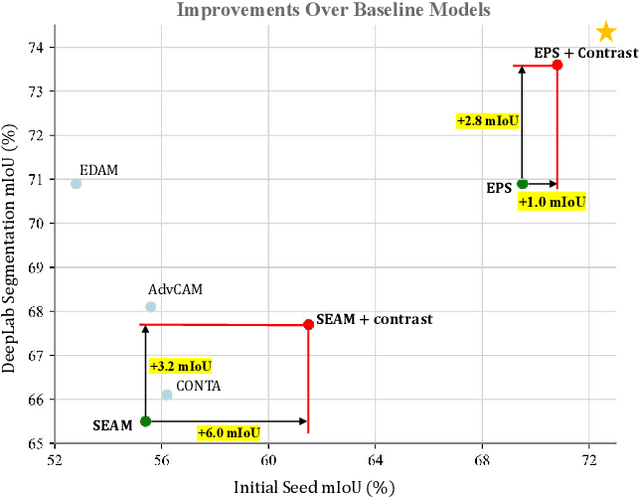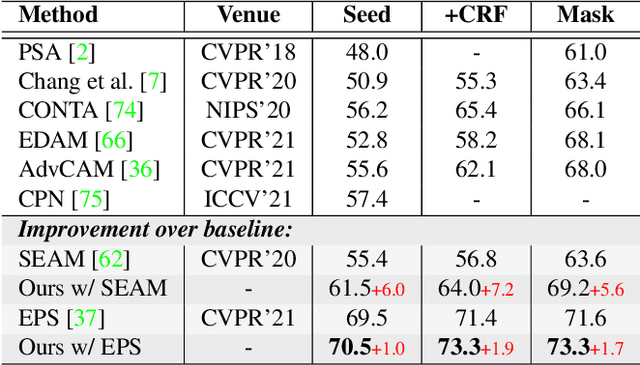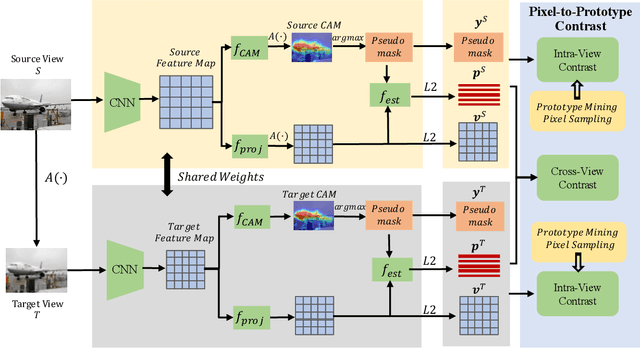Weakly Supervised Semantic Segmentation by Pixel-to-Prototype Contrast
Paper and Code
Oct 14, 2021



Though image-level weakly supervised semantic segmentation (WSSS) has achieved great progress with Class Activation Map (CAM) as the cornerstone, the large supervision gap between classification and segmentation still hampers the model to generate more complete and precise pseudo masks for segmentation. In this study, we explore two implicit but intuitive constraints, i.e., cross-view feature semantic consistency and intra(inter)-class compactness(dispersion), to narrow the supervision gap. To this end, we propose two novel pixel-to-prototype contrast regularization terms that are conducted cross different views and within per single view of an image, respectively. Besides, we adopt two sample mining strategies, named semi-hard prototype mining and hard pixel sampling, to better leverage hard examples while reducing incorrect contrasts caused due to the absence of precise pixel-wise labels. Our method can be seamlessly incorporated into existing WSSS models without any changes to the base network and does not incur any extra inference burden. Experiments on standard benchmark show that our method consistently improves two strong baselines by large margins, demonstrating the effectiveness of our method. Specifically, built on top of SEAM, we improve the initial seed mIoU on PASCAL VOC 2012 from 55.4% to 61.5%. Moreover, armed with our method, we increase the segmentation mIoU of EPS from 70.8% to 73.6%, achieving new state-of-the-art.
 Add to Chrome
Add to Chrome Add to Firefox
Add to Firefox Add to Edge
Add to Edge